Photo

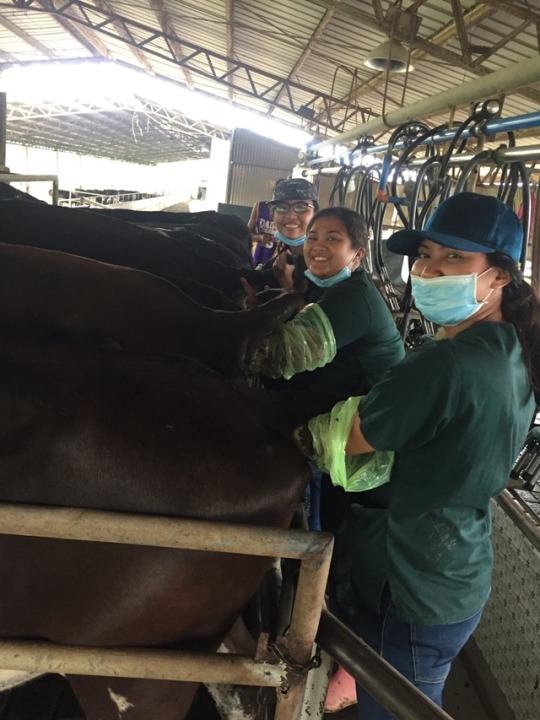




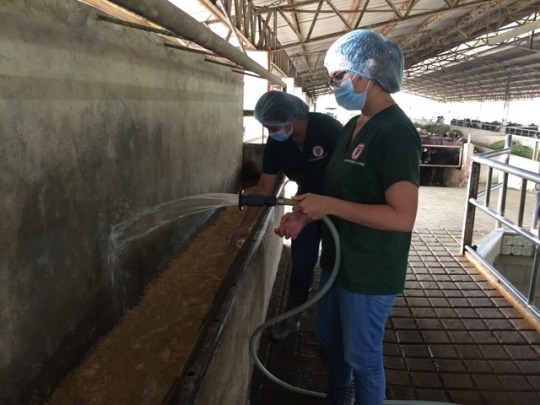



Day 25
After cleaning the pens, we were able to perform pregnancy diagnosis in 32 cows. The farm regularly consults with the NDA or Mr. Cesar Almares, a retired specialist from NDA for the pregnancy diagnosis in their cows. They do this every 3-4 months. He was very kind enough to teach and explain to us on what we should look for during pregnancy diagnosis. It was a lot of fun and we were covered with poop after the activity. In the afternoon we helped with the milking, by this time we consider ourselves as pro in the job, we really got the hang of it! We also hosted a merienda for the the staff in the office and the farmboys. Thank you CV Toreja Dairy Farm for accommodating us, especially to the owners, Dr. Eileen and Mr. Arnel Toreja who were very kind to us. This experience gave us an overview on how to manage the farm and what routine tasks are performed in the farm. Rest assured that we will apply our learnings in the near future when we go into practice as veterinarians. :)
0 notes
Photo



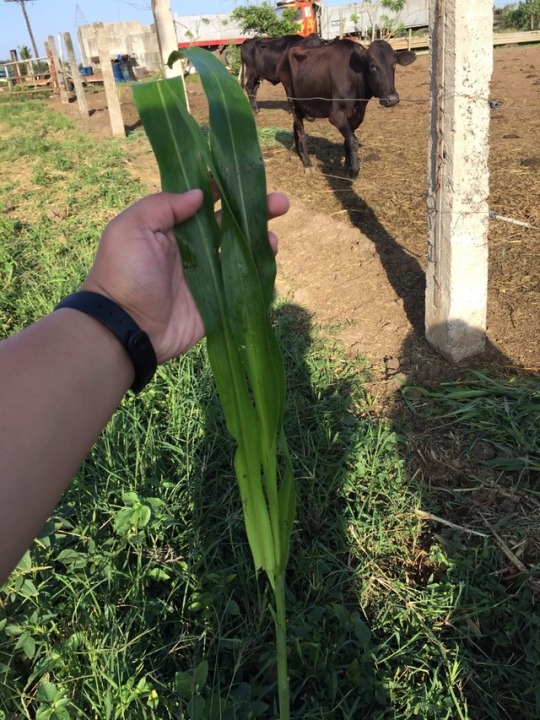
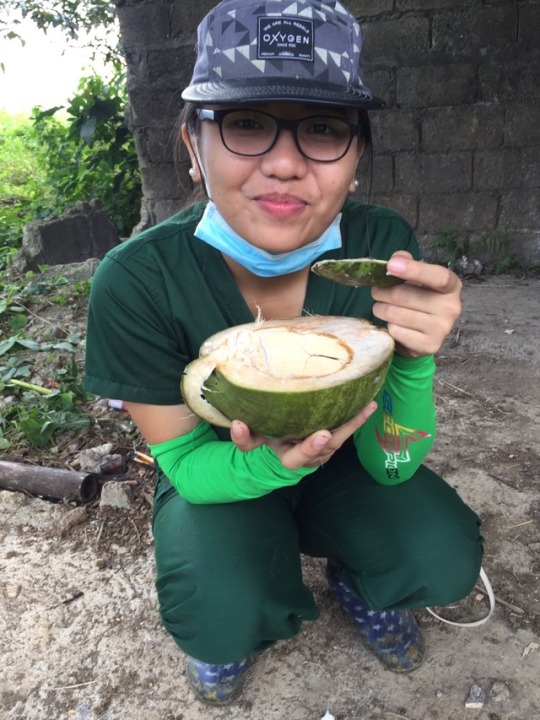


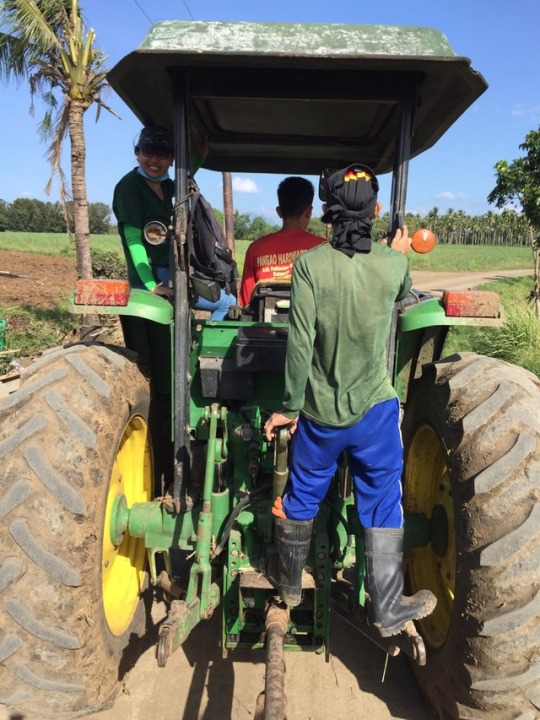
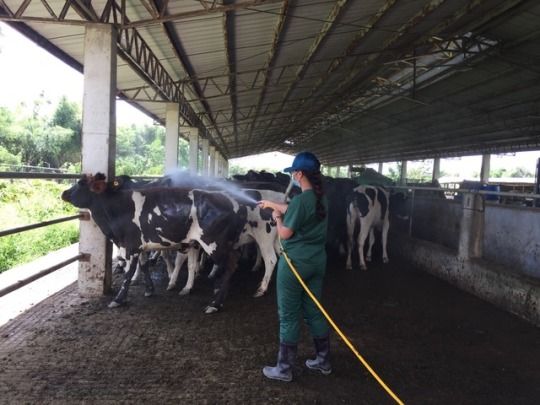

Day 22 & 23
The first thing that we did in the morning was to clean the pens of the milking cows. After that, we were able to join the workers in the farm during the harvesting of the napier grass. It was really cool to see how a tractor and a harvester works together. The product of the harvester are freshly chopped napier grass. Kuya Tunggal, the driver of the tractor also allowed us to drive it, it was really a lot of fun! We also spent our day by identifying the grasses and legumes that they feed the cows in the farm. These are namely napier grass, signal grass, star grass and sudan sorghum. In the summer, when no grass is available, they usually give the cows ricestraw and sugarcane. After the harvesting, we bathed the cows with super-methrin, this is done every 15th and 30th day of the month so the flies and insects would stay away from them and would lessen the occurrence of wounds and inflammation especially around their eyes which is the main target of the flies. In the afternoon, we helped in the milking. They usually produce around 500 liters of milk per day with about 70 plus milking cows. The 150 liters from this is allocated to the calves and the other 350L is brought to the MilkJoy processing center in Lipa at morning and the Real Fresh Dairy Farm collects the milk in the afternoon.
0 notes
Video
Kuya Adam bathing the bull with super-methrin (permethrin) diluted in water.
0 notes
Video
The harvestor directly cuts the napier grass when it goes through the machine.
0 notes
Photo
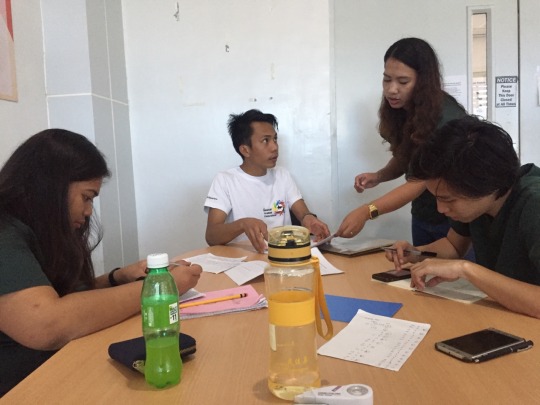







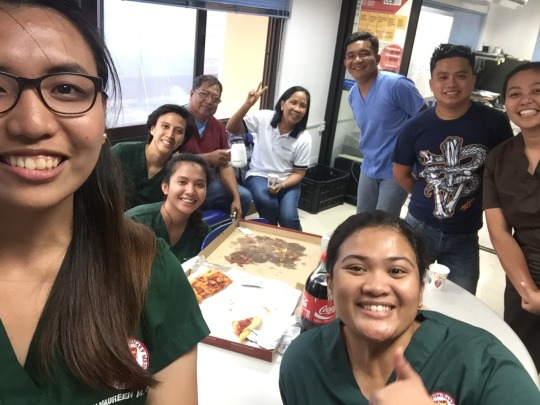

Day 20
Our first stop for our last day here in PCC was the Animal Health Unit, we met up with Sir Dads and turned in our requirements. After that we had a picture with him for it was the last time that we were gonna see each other. Thank you Sir Dads for always being so kind and guiding us throughout our journey here in PCC.
Our day continued in the GenePool Farm, the first thing that we did upon arriving was to debride Theodore’s wounds and inject him with amoxicillin and tolfenamic acid.
Taildocking was performed to Theodore that afternoon because his tail was necrotic. Caudal epidural anesthesia was performed near the base of the tail at the intercoccygeal space and 10ml of lidocaine was injected. After the anesthesia has taken effect, tourniquets were placed and the V-incision was made on the tail. While incising the skin on the tail, I was able to perform infiltration analgesia also so that the pain would be minimized. The cartilages in the tail were severed and the tail was finally cut off. Before closing the skin, we ligated the vessels around the tail so that bleeding would not occur, to make sure, we also administered epinephrine to the site. The skin was then sutured using simple interrupted pattern. It was a really fun experience for it was my first time performing the tail docking surgery.After the procedure we went to the NIZ building and had a little merienda with them.
Thank you PCC for the many firsts experiences and learnings in the large ruminant field. :) <3 I am truly grateful and will forever treasure the learnings you have given me.
0 notes
Photo


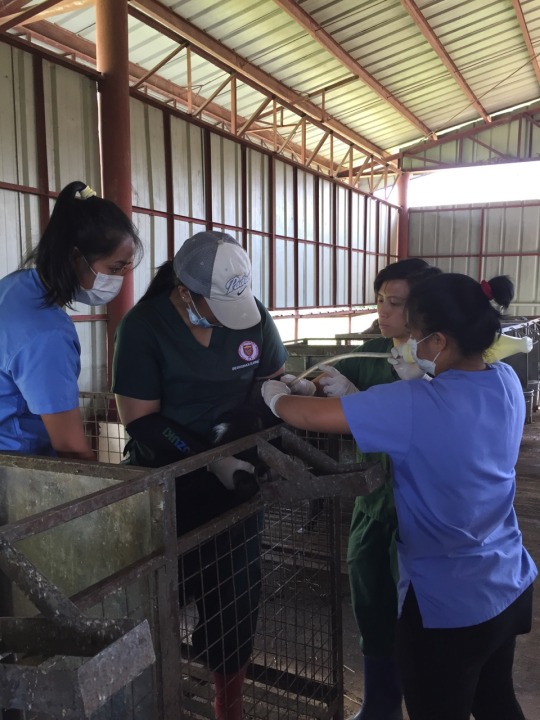

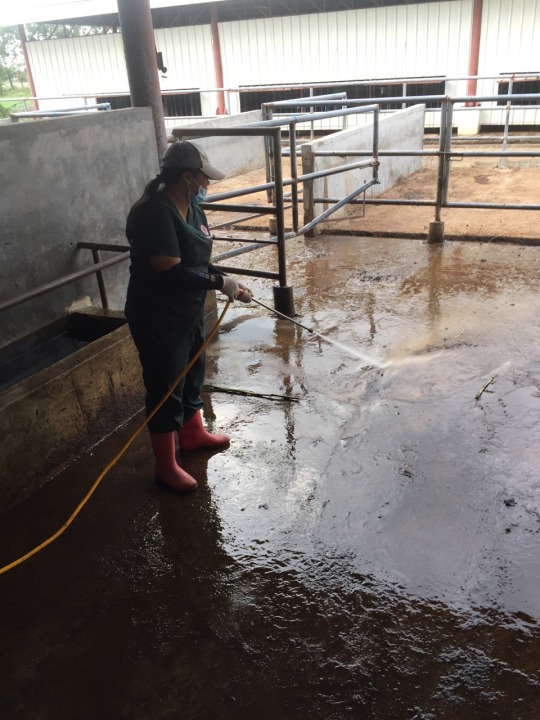





Day 18
Unfortunately, we did not do anything today because the vets and staff of NIZ were attending a 2 day seminar. We just stayed at the library and finished the requirements that we needed to submit to the HR department by the end of the week.
Day 19
Today, we were stationed at the GenePool farm. The first agenda for the day was to observe Sir Otep do Artificial Insemination in the carabaos. There, we met two other interns from NVSU, Ruth and Arianne. He told us that water buffaloes does not easily get pregnant. He also gave us a brief discussion of the ovarian cycle that undergoes within the water buffalo. After insemination, we addressed the lameness of one carabao by injecting it with tolfenamic acid and multivitamins. We then went to Theodore, our patient during our week at the Gene Pool and he was still not looking good. We gave him a bath to relieve him from the dirt that is covering his body.
In the calf barn, electrolytes in warm water was given to a calf that was suffering from indigestion. After that, we injected the calves that are to be transferred into another pen with Duramectin and Iron supplement. They are due to be transferred into the big pens where they will be housed together. Most of them are 3.5-4 mos in age. Before transferring the calves, we cleaned their pens and applied disinfectants. They were to be weighed-in first before they can be transferred and the calves, given that it was their first time being restrained and stepping on the concrete floor were very active and we had a hard time restraining and transferring them into the pens. It was a very tiring yet awesome day at the farm! :)
0 notes
Photo
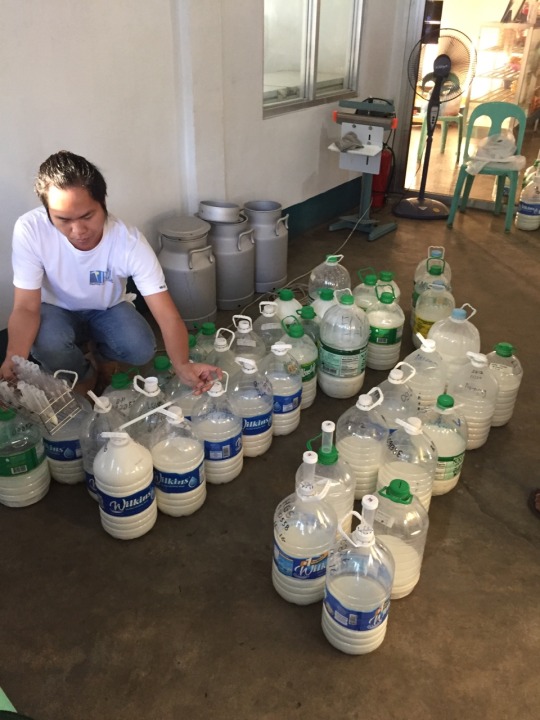




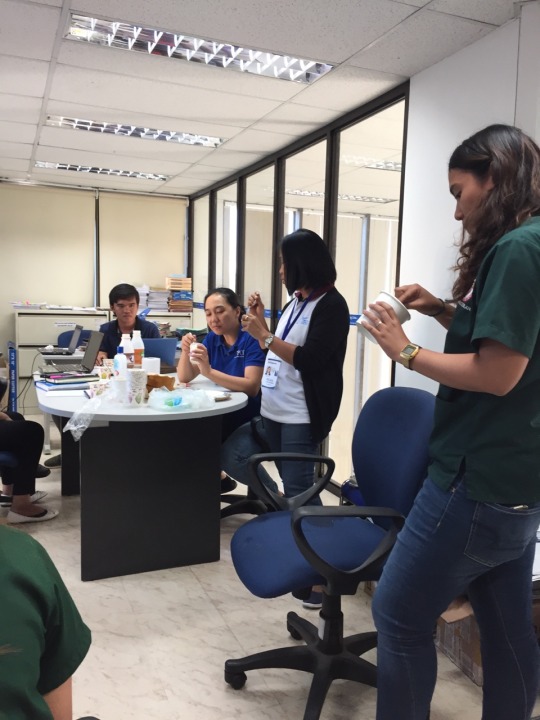




Day 17
It was milk test day at the Eastern Cooperative in San Jose, Nueva Ecija. We left PCC at around 6:30AM. When we arrived at their milk processing plant, a lot of farmers have already lined up their milk gallons for the day. Dr. Chat and Ma’am Jilliene taught us first on how to do a proper milk test and grading. After that, we proceeded on our own and processed about 50-60 bulk milk gallons and milk samples from each teat of the animal. Tata Mar Delizo also held a simple meeting with the members of the cooperative that day. We were finished by 11AM and the chairman of the cooperative treated us to lunch.
We were back at the office that afternoon and stayed there if ever there would be a call from the farmers needing assistance. Ma’am Wilma and the staff were having a meeting that afternoon and invited us to have merienda. Bea and Rey also bought Tilapia Ice Cream, it was a first for most of us and the ice cream for me, tasted like cheese flavor.
We headed out of the PCC complex at 5PM and Rey, our co-intern was gracious enough to tour us into their college building at CLSU. He was also very kind to ask the staff at the Small Ruminant Center if we could take a peek there. It was a plus that he was conducting his thesis there so we were permitted to go in. I really enjoyed seeing the center and some of the breeds present there are toggenburg, saanen and boer. We ended our day by having dinner at their old market place in CLSU which is like the raymundo gate in Los Banos.
0 notes
Video
Actual video of our Milk Testing. The upper left quadrant was graded as +2.
0 notes
Photo


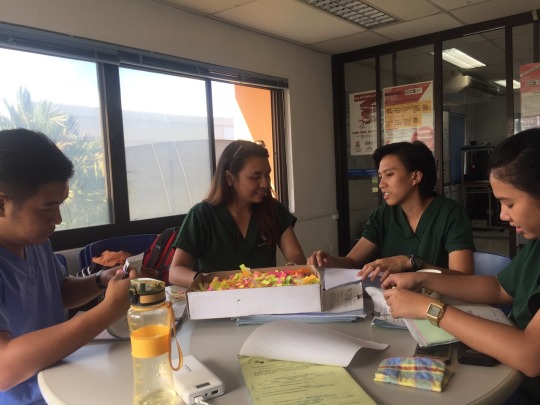
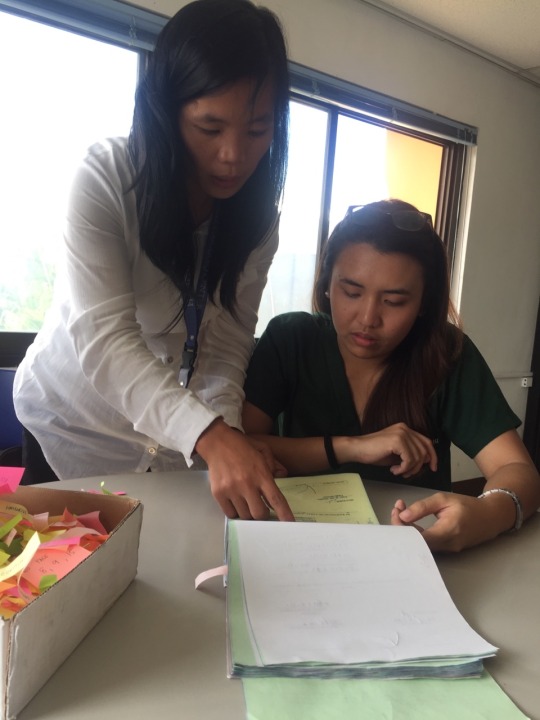

Day 16
It was a monday and that means office work day and meetings for all of the staff in the National Impact Zone department. We also spent our day by doing office work, we were instructed by Ma’am Myra to recheck the contracts of the farmers and see if there were missing signatures in the contracts. Doc Bjet also celebrated his birthday in the office today, we were so full after the meal.
0 notes
Photo
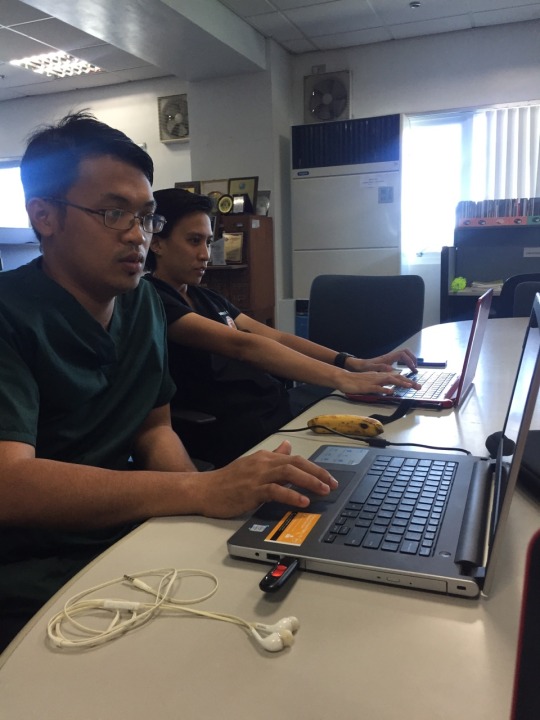





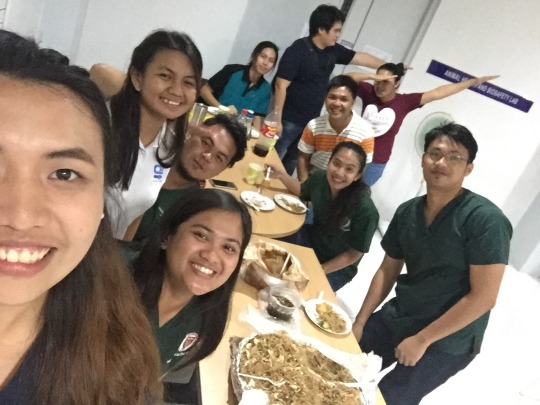
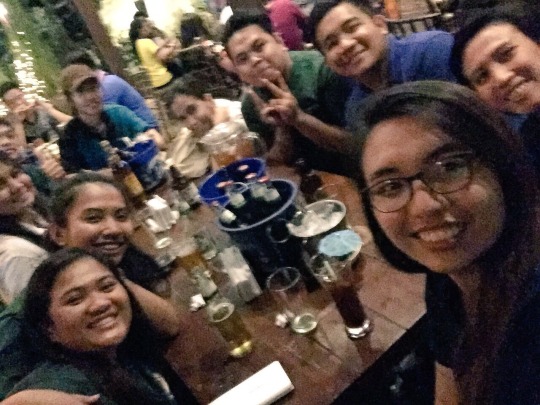

Day 15
The Animal Health Lab was busy because the ISO ( International Organization for Standardization ) was there to check and audit the laboratory. It was our reporting day so Sir Dads just told us to stay in the library and work on our report.
It was about 4:30 in the afternoon when we started our reporting, all the doctors from the animal health unit were there including some from the biotech reproduction and Doc Tin from the Genetics Improvement Program. I was really nervous to present our case in front of the doctors, it was like our conference class but somehow it still scares me to present in front of all the doctors. They had a lot of questions especially Dr. Nancy Abes, we were able to answer some of her questions and when we do not know the answer Dr. Nancy was very kind enough to explain it to us. We were finished by 7PM and as a token of gratitude to the Animal Health Unit we brought pansit and tokwa which we shared after the reporting. After our reporting, the Doctors invited us for drinks. It was a good day indeed! :) Thank you to the Animal Health Unit! :)
0 notes
Photo


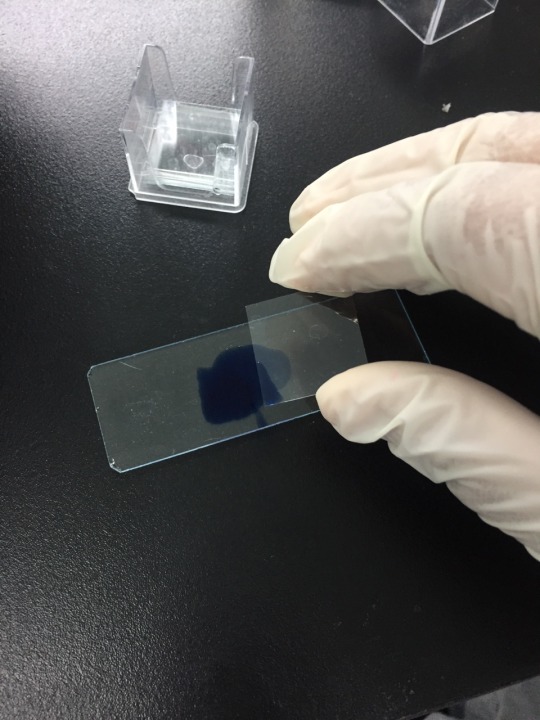







Day 14
Today was another day for DNA extraction from blood samples and I felt more at ease in doing the procedure. After that, we did another round of fecalysis using the shortcut method that Sir Dads have taught us. We were able to see fasciola and strongyle eggs under the microscope. Our last task for the day was to help in cleaning the lab for the ISO ( International Organization for Standardization) will come the day after to audit the laboratory.
0 notes
Photo
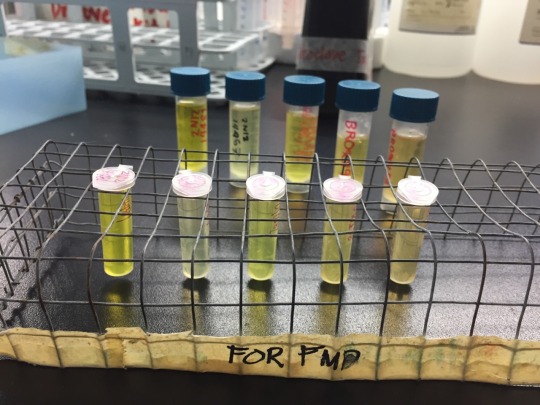
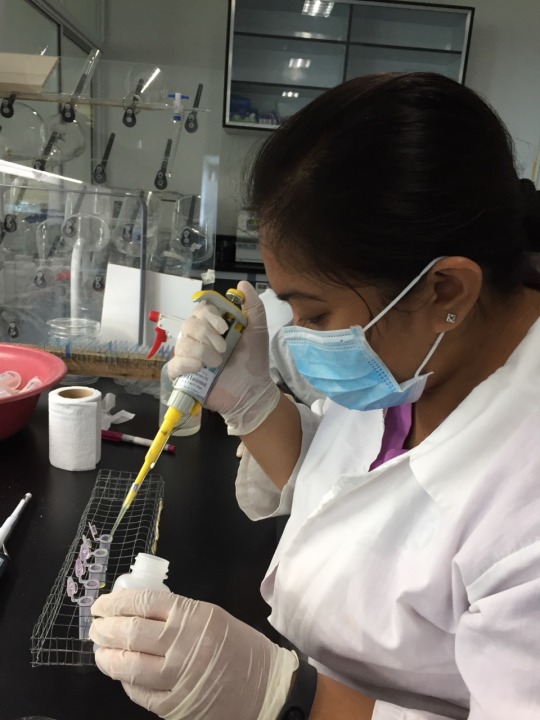


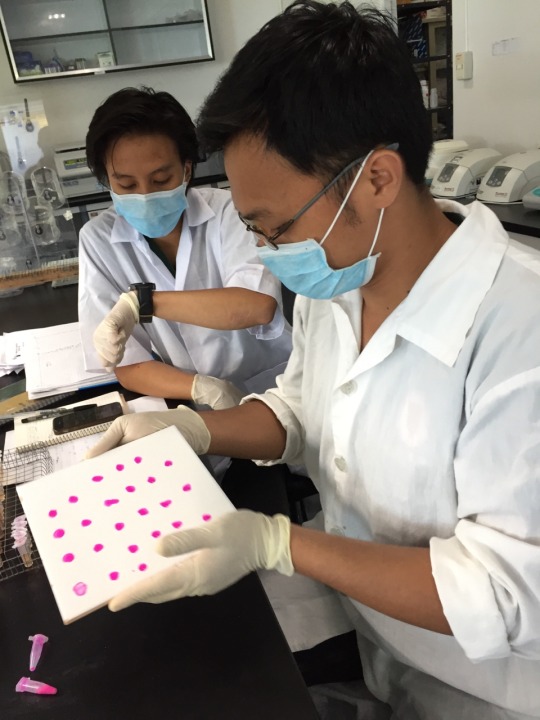


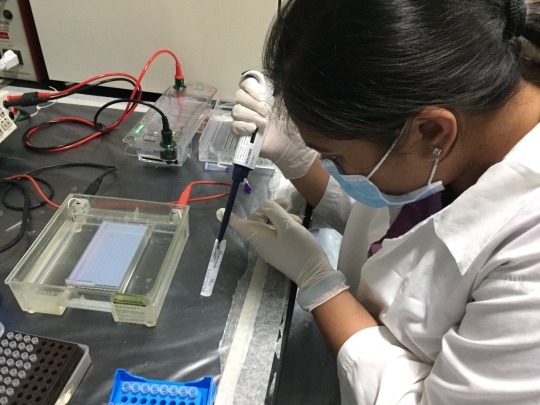
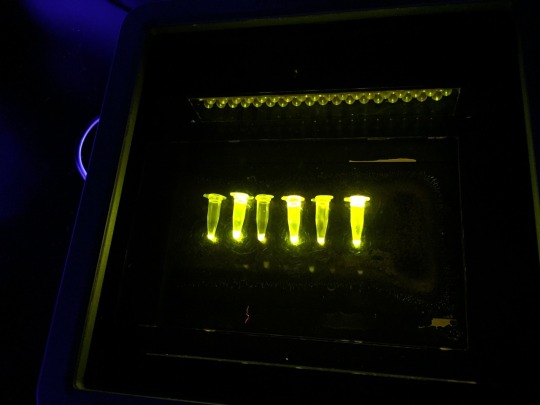

Day 13
The first task for the day was to extract DNA from urine samples that were brought to the lab. They were to be tested for leptospirosis using PCR. It was a new experience for me and I really enjoyed the activity. After isolating DNA from the urine, we collected serum from blood samples that were to be used for the Rose Bengal Plate Test.
In the afternoon, we tested the collected serum for Brucellosis using the RBPT. It was another first for me since during our microbiology days our lab section was not able to do it. After the testing, Dr. Joram Gautane had a brief lecture about PCR and we were able to do hands on experience on PCR with the guidance of Dr. Daryl Dela Cruz. He also showed us their CAE LAMP (Loop Mediated Isothermal Amplification) project which is a type of test kit used to detect the Caprine Arthritis and Encephalitis Virus. It is one of the innovative projects of the PCC and is the first in the Philippines.
Before we went home, blood samples from the cooperatives were brought to the lab so we readily tested them for surra using the HCT method. We went home around 7PM that night.
Overall, it was a day of firsts for me and I was glad that I was able to learn a lot in the lab today! :)
0 notes
Photo






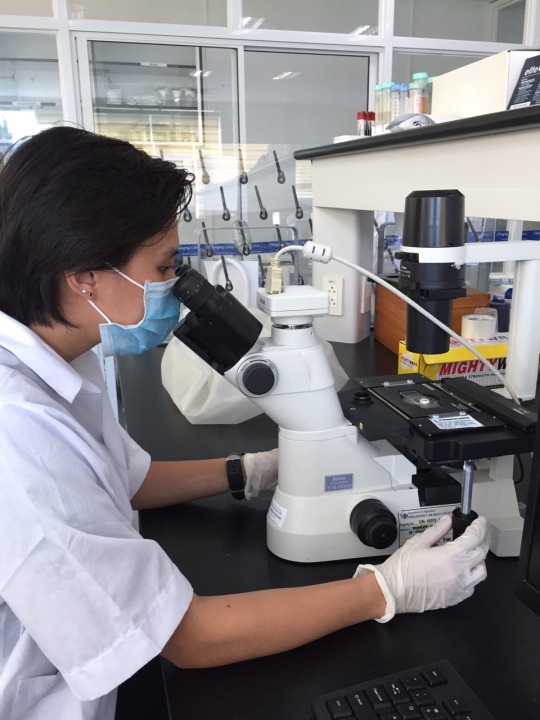
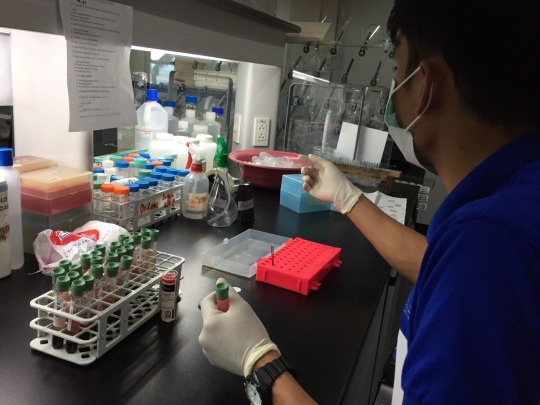


Day 12
Our day started with checking our extracted DNA and heating them to 95 degrees for 10 minutes. After that, we were tasked to fill the boxes of micropipette tips. Sir Dads also showed us the different machines in the lab such as their autoclaving machine,distilled water machine for PCR and many more. I was always in awe of how high tech the lab was. Fecalysis was our next task for the day, Sir Dads taught us the shortcut method in doing the sedimentation and sugar flotation technique. This time no siphon was needed and lesser volume of water was used. The technique really shorten the processing time for each sample. Some of the eggs that we have seen that day are fasciola and strongyloides. After doing fecalysis, we went to the receiving area to help Doc Chat in recording the lab tests that were done this January 2017. After doing fecalysis, we went to the Gene Bank where they transferred their mice for inoculation experiment. We fed the mice and replaced their waterers. Back at the lab, a new batch of samples were waiting for us so we quicly processed their blood and did the HCT test and recorded their PCV. It was dark when we got out of the lab.
0 notes
Photo
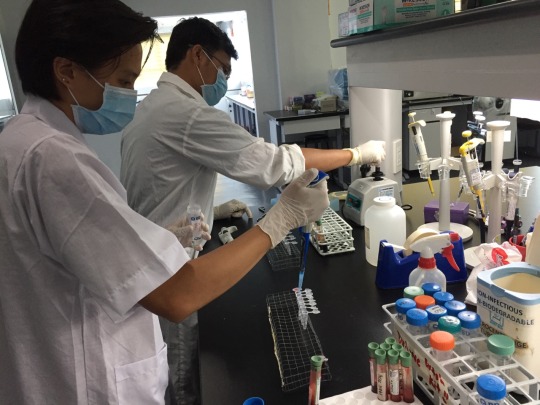


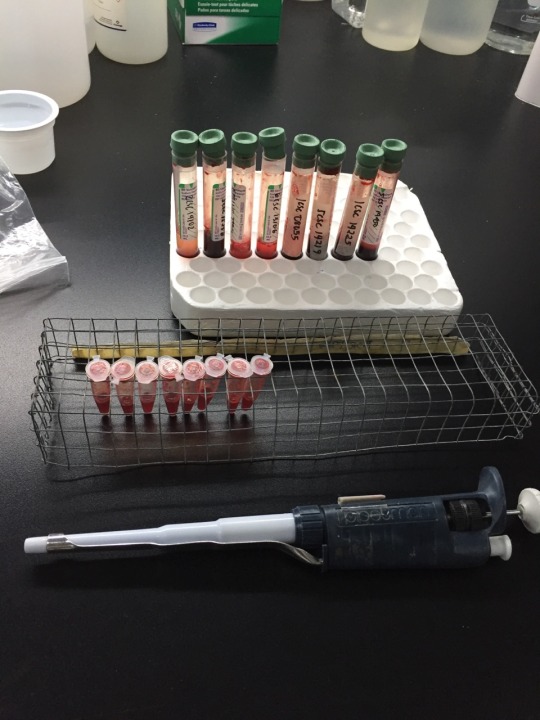
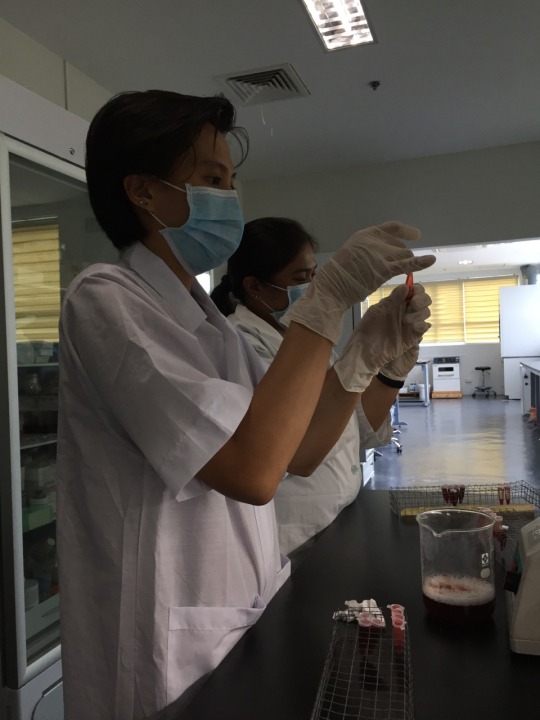




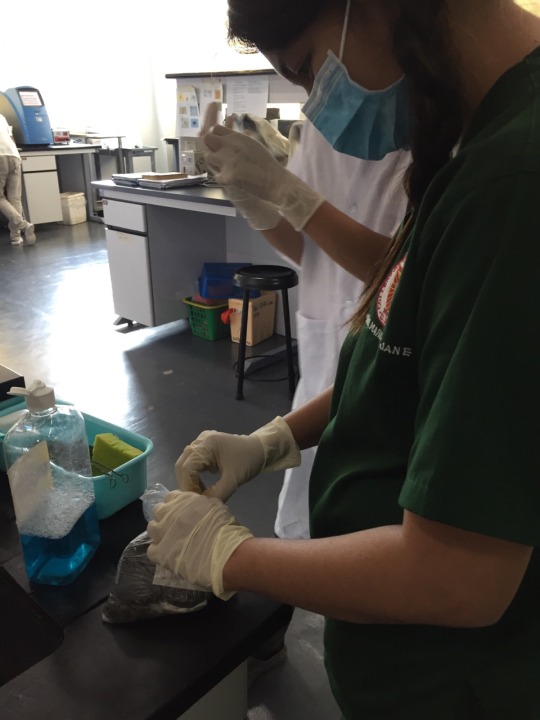
Day 11
This week, we were stationed at the Animal Health Unit and Biosafety Laboratory. Our first task for the day was DNA Extraction from blood samples. Sir Dado (Eduardo Nastor) demonstrated the step by step process in DNA Extraction. I was really excited during the activity for it was my first time doing it. It was really fun and we learned the proper techniques in handling the micropipette and reagents. It took us half of the day just to extract the DNA. We waited for our samples to dry and then rehydrated and stored them. In the afternoon, we processed fecal samples through sedimentation and sugar flotation method.
Here are some of the reagents and their corresponding functions during DNA Extraction: 1. NH4Cl - removes/lyse RBC 2. Cell lysis- breaks the wall of the cell 3. Nuclei lysis - lyse nuclear envelope 4. Protein precipitate - precipitate artifacts and debri then clots protein 5. EtOH - where DNA is suspended
0 notes
Photo







Day 9 We were surprised to see that Theodore was standing when we came to his pen and he did not need the cow lifter anymore, we were really glad about his progress. Spraying on his wounds was continually done while C112 seemed to be a bit of a downer and does not eat too much, according to Doc Jim, the early stages of pneumonia is that the calf will be in a downer state and will not eat. After that, we finished the remaining pens for deworming and vitamin injections.
0 notes
Photo

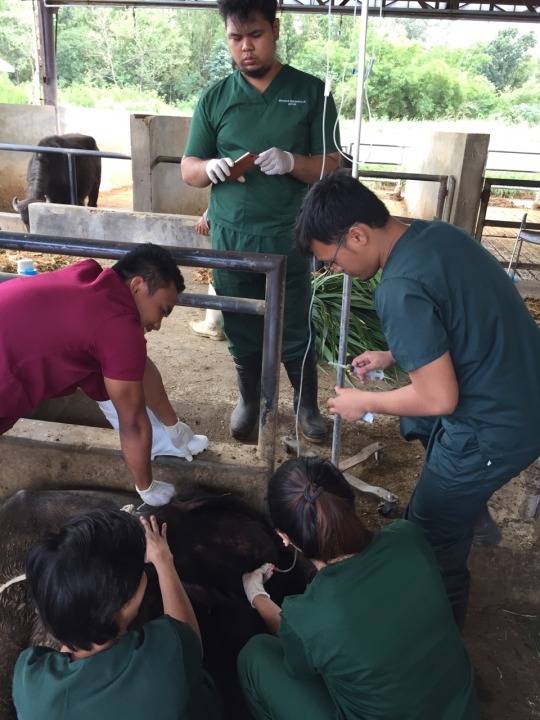






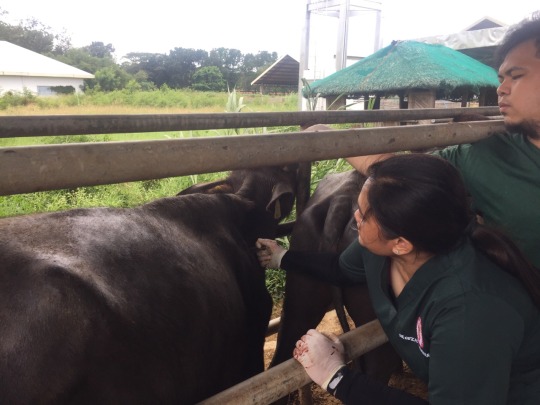

Day 8 The day started with us checking on Theodore and putting him on the cow lifter, even if he cannot bear his own weight, we noticed improvement with his walking and he eats a lot and seems to be in a better condition compared to the past few days. He was also given shots of multivitamins and vitamin b-complex with liver extract. Also, that morning, C112 was found to be a downer and was decided to be isolated, due to the lack of individual pens and C112 might be also needing the cow lifter, they were put into the same pen. The animal was said to have pneumonia and was having nasal discharges, intravenous fluid was given and shots of marbofloxacin and flunixin meglumine through IV while vitamin b-complex with liver extract and multivitamins were administered intramuscularly. It was noted that after giving fluids, the calf can bear its weight and walk on its own but was having difficulties. In the afternoon, we dewormed and administered vitamins to the almost 100 calves. It was a lot of physical work when it comes to physically restraining them but it was all worth it because we were able to practice these skills and quite got to be good at it by the end of the activity.
0 notes